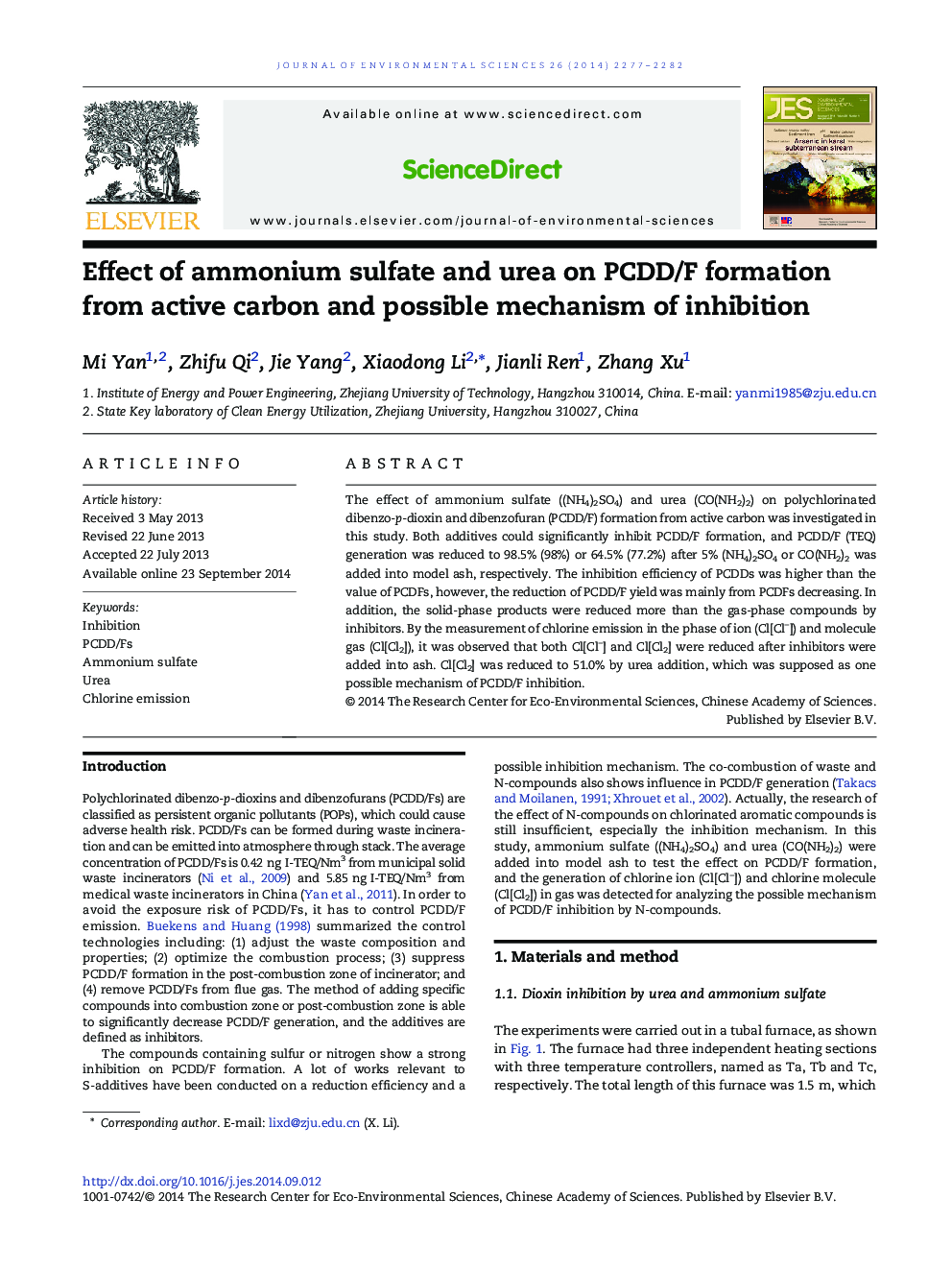| Article ID | Journal | Published Year | Pages | File Type |
|---|---|---|---|---|
| 4454350 | Journal of Environmental Sciences | 2014 | 6 Pages |
The effect of ammonium sulfate ((NH4)2SO4) and urea (CO(NH2)2) on polychlorinated dibenzo-p-dioxin and dibenzofuran (PCDD/F) formation from active carbon was investigated in this study. Both additives could significantly inhibit PCDD/F formation, and PCDD/F (TEQ) generation was reduced to 98.5% (98%) or 64.5% (77.2%) after 5% (NH4)2SO4 or CO(NH2)2 was added into model ash, respectively. The inhibition efficiency of PCDDs was higher than the value of PCDFs, however, the reduction of PCDD/F yield was mainly from PCDFs decreasing. In addition, the solid-phase products were reduced more than the gas-phase compounds by inhibitors. By the measurement of chlorine emission in the phase of ion (Cl[Cl−]) and molecule gas (Cl[Cl2]), it was observed that both Cl[Cl−] and Cl[Cl2] were reduced after inhibitors were added into ash. Cl[Cl2] was reduced to 51.0% by urea addition, which was supposed as one possible mechanism of PCDD/F inhibition.
